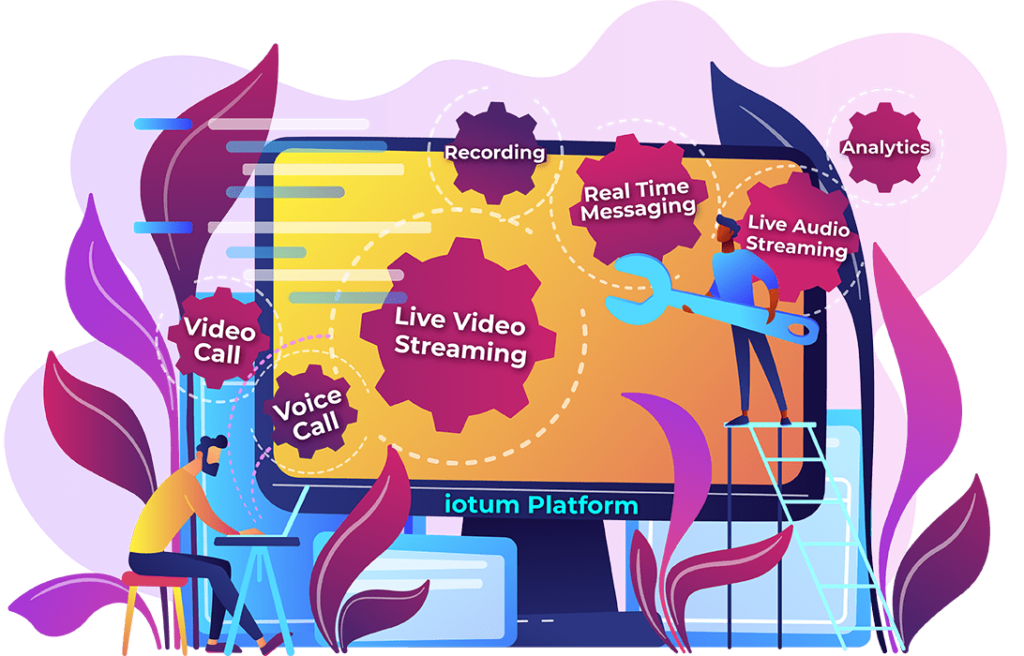 For teachers, a virtual classroom opens up the pleasure of learning to a huge number of students around the world. Learning new skills and taking courses that provide exciting content is readily available now that everyone has the opportunity to learn anything with the implementation of digital tools. A “virtual classroom” becomes the online space for high-quality courses to be taught. But to keep up with the growing trend of teaching virtually, there are a few things to familiarize yourself with first.
For teachers, a virtual classroom opens up the pleasure of learning to a huge number of students around the world. Learning new skills and taking courses that provide exciting content is readily available now that everyone has the opportunity to learn anything with the implementation of digital tools. A “virtual classroom” becomes the online space for high-quality courses to be taught. But to keep up with the growing trend of teaching virtually, there are a few things to familiarize yourself with first.
As an educator, investing in the right digital tools can make the difference between a class that feels engaging and collaborative and one that isn’t. If you want your content to be sent and received clearly, then selecting video conferencing software that is easy-to-use, compatible with all devices, and provides high-quality audio and video output is the first critical step.
The purpose of a virtual classroom is to take the concept of a real-life, in-person classroom and transition it online, which is why it’s in your best interest to understand the full capabilities of your technology. That way you can run a class everyone wants to attend and everyone can attend a virtual setting that they feel comfortable learning in!
High-quality video conferencing that supports a virtual classroom and learning environment comes loaded with features that mimic an actual classroom. For example:
- Cue the flow of a presentation or lecture by giving a selected student or professor the active view using Speaker Spotlight.
- See all classroom participants as small tiles in a grid-like formation for a more inclusive online setting when you click Gallery View.
- Share exactly what’s on your screen for ultimate collaboration in real-time that lets others follow along right with you when you enable Screen Sharing.
- Use shapes, colors, videos, and images to convey hard-to-explain concepts to students with an Online Whiteboard. Everyone can participate and each board can be saved for future reference.
- The perfect way to communicate without disrupting the key speaker, Group Chat allows for chatter on the side.
- Easily upload and download essential files for everyone to access. Files, videos, links, and media are easily sent and received with File and Document Sharing.
- Hit record using Video Recording to capture the seminar so students can watch at their own pace and educators can use it for training purposes.
 Knowing how your technology works means you can make full use of all the learning resources available to you and your students during a virtual class. Consider the reading material, and how images and videos can play a big part in absorbing new ideas. Look to see about file hosting and other integrations like project management tools that come with video conferencing software to enrich the quality and broaden the scope of your lessons.
Knowing how your technology works means you can make full use of all the learning resources available to you and your students during a virtual class. Consider the reading material, and how images and videos can play a big part in absorbing new ideas. Look to see about file hosting and other integrations like project management tools that come with video conferencing software to enrich the quality and broaden the scope of your lessons.
If you want to jack up the energy to keep students focused and in participation mode, add more opportunities for interaction to keep people in the present. Incorporate a few virtual classroom activities before, during, or after your course material for heightened engagement and better learning:
- Icebreakers
Depending on how big your class is or how often you meet, encouraging an icebreaker as an introduction works to create more connection. Use one to get students chatting; to foster more camaraderie or loosen up the tension. Try writing a quote on the online whiteboard when students are first showing up for class, or posing a question in the Group Chat to get the juices flowing and the conversation going! - Polls
A real-time poll that asks for user input is a visually appealing and engaging way to see how questions are answered instantly. Simply ask the group a question and provide a link to the poll. Students can enter their answer and see how it stacks up with everyone else’s! - Energy Boosters
Breathe life into lectures, seminars, and long course content by inviting everyone to stand up and move. Have a short piece of music on hand to cue a dance break or mini stretch session. Remind students to grab a glass of water, refocus their eyes or take a bio break. - Social-Emotional Weekly Routines
This can be as simple as promoting a different theme every day of the week. Try Mindfulness Mondays where you can open your class with a small meditation that leads into your lecture. Think of a doable routine that incorporates or supports your teachings. On the other hand, it could just be fun and something to look forward to, like an hour every Friday for a book club that discusses optional reading books.
Connecting with your students pays off. The more interactive your class is, the more they will want to participate and learn better. If participation isn’t part of your program, just remember that every point of interaction is an opportunity for integration, especially online. Maximizing interaction can look like:
- Setting polls and quiz questions
- Using the chat box so students can share answers, opinions, get support, etc.
- Writing and using images on the online whiteboard to break down terminology, brainstorming ideas, etc.
- Making use of teaching techniques like round-robin, clusters, and buzz groups to drive home theories, ideas, and concepts.
 Pro-tip: Whichever ideas you choose to incorporate, the most important thing is to know where your camera is! Look straight into the webcam, smile, and interact. This eye to screen connection translates exceptionally well for students to feel extra supported in their learning. Plus, it helps you to appear polished and professional while you teach.
Pro-tip: Whichever ideas you choose to incorporate, the most important thing is to know where your camera is! Look straight into the webcam, smile, and interact. This eye to screen connection translates exceptionally well for students to feel extra supported in their learning. Plus, it helps you to appear polished and professional while you teach.
Here are a few must-haves for an effective virtual classroom setup:
- A solid wifi connection
- A device with a camera
- A ring light or lamp
- A piece of decor (plants, a piece of art, etc)
- A calm background (the less busy the better)
- Video conferencing software
With FreeConference.com you can make your virtual classroom a warm and welcoming place for students of all ages and worldly places to learn, share and integrate! There are a number of features that come loaded with FREE web conferencing like screen sharing, and file sharing so you can teach, motivate and engage with the exciting course material your students want to know more about!


